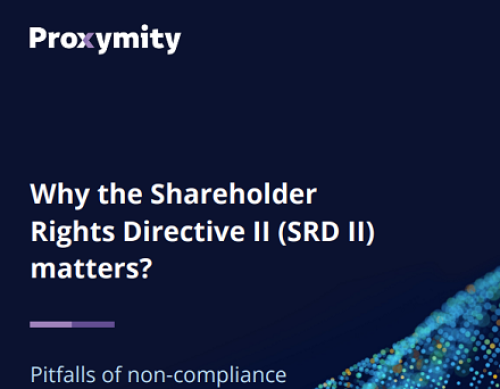Research budgets at European asset management firms have fallen since the introduction of Mifid II and independent research providers have not benefitted from the regulation, according to a report by CFA Institute, the global association of investment professionals.
In the year following the introduction of Mifid II, the scaling back of research budgets has seen the largest firms make the biggest budget reductions – with the average decrease in research budget being 6.3 percent, according to the research.
And the reduction in budget increases with firm size: for firms managing more than €250 bn ($283 bn) of assets, the average budget reduction is 11 percent, whereas for firms managing less than €1 bn of assets, the budget change is negligible.
The survey also reveals that independent research providers have not benefitted from Mifid II, as a more competitive research marketplace drives a squeeze on research providers and fewer sell-side analysts – 57 percent of buy-side respondents report sourcing less research from investment banks than before Mifid II.
The impact on small caps
Buy-side professionals mostly believe that research quality is unchanged, but sell-side respondents are generally more pessimistic, with 44 percent believing that research quality has decreased overall.
The same number sell-side respondents – 44 percent – believe that research quality specifically for small and mid-cap stocks has decreased. Less than 10 percent of respondents across both the buy side and sell side believe research quality has increased.
Survey respondents also express concerns over research coverage, with 47 percent of buy-side respondents and 53 percent of sell-side respondents reporting a decrease in coverage of small and mid-cap stocks. Sell-side respondents perceive there to be a reduction in analyst numbers, cited by 54 percent.
A more competitive marketplace
Analyzing what is behind the data numbers, Mifid II expert Michael Hufton, managing director of ingage, tells IR Magazine: ‘The input cost for research is almost entirely labor. So budgets being cut means people being squeezed – so, in the short term at least, it should surprise nobody that this impacts quality. This manifests itself in a number of ways: people who have done this for a while and have had a good run feeling it’s time to hang up their boots – so experienced analysts retiring – and those who remain being asked to cover more stocks. So overall, a thinning and juniorization among sell-side analysts.’
Hufton also adds that this research reveals much about pre-Mifid II practices. ‘The key driver behind the Mifid II reforms was the sense that there was a fundamental, fatal flaw in prevailing market practice: research was bought and consumed by fund managers, but paid for by the clients whose money they managed.
‘The fact that the cost of research has largely been taken on to the buy-side profit and loss, and that the result has been a substantial cut in research expenditure – proves that the reform was absolutely necessary. The regulatory requirement before was always to spend client money with at least as much care and diligence as you spent your own. Yet the introduction of transparent pricing has resulted in a big fall in spend. This has to mean that there was over-spend before.’
Overall, respondents believe the research marketplace is more competitive – a view expressed by 39 percent, compared with 25 percent who believe the research market is less competitive.
‘Mifid II has brought transparency and competition to the investment research business. But as asset managers have absorbed research costs, we have seen a notable reduction in research budgets that is causing a shake-out among research providers,’ comments Rhodri Preece, head of industry research at the CFA Institute, in a statement. ‘Independent and sell-side research providers are under pressure, which we see translating into reduced research coverage, particularly in small and mid-cap equities, and fewer sell-side analysts.’
The research from the CFA Institute aimed to offer the first European-wide perspective on Mifid II from investment professionals working across both the buy side and sell side of the investment industry, with respondents working predominantly in portfolio management, research and C-suite roles.
The survey involved nearly 500 European portfolio managers, analysts, and other professionals on the impact of Mifid II on the cost, quality and coverage of investment research.










